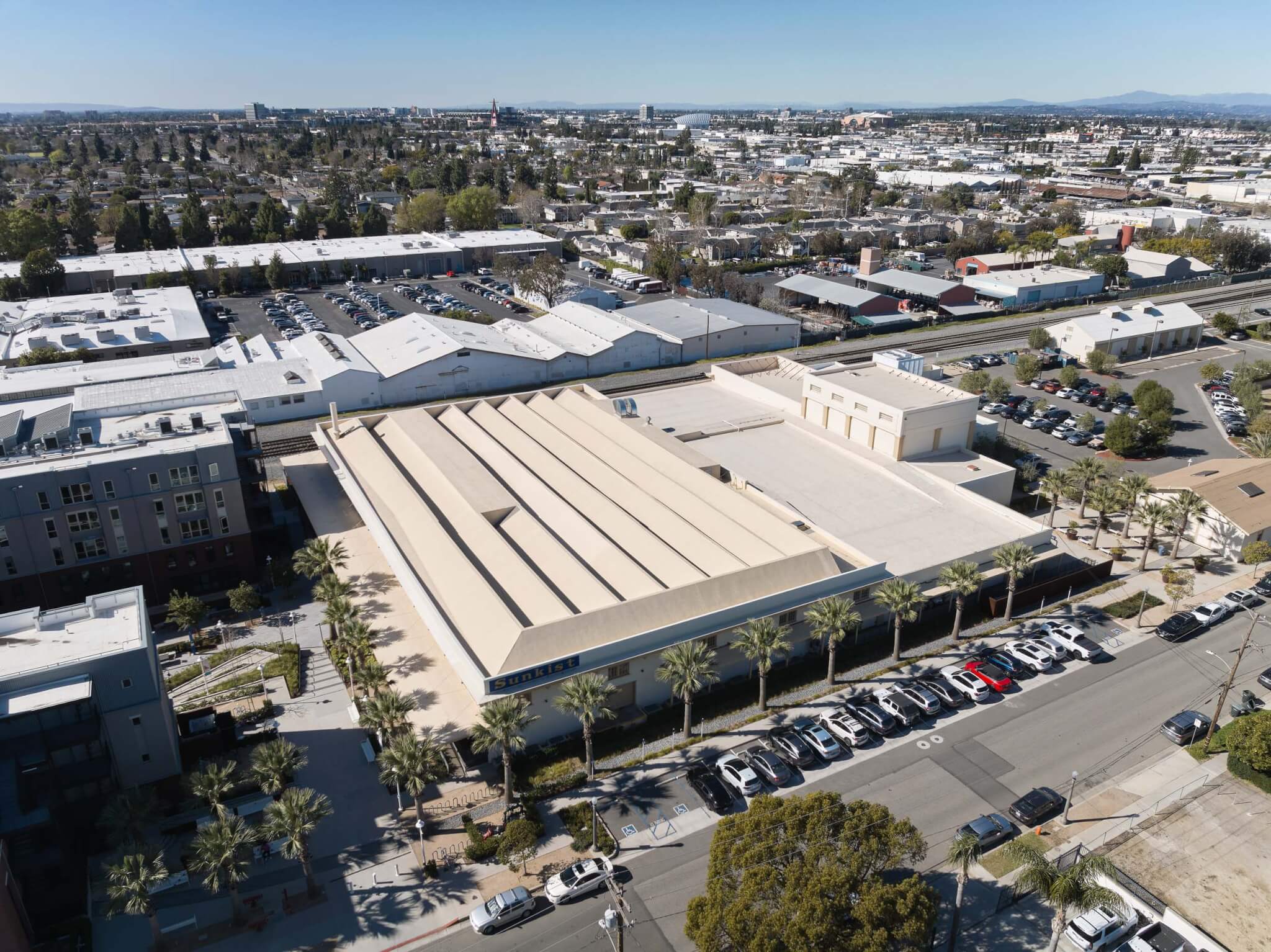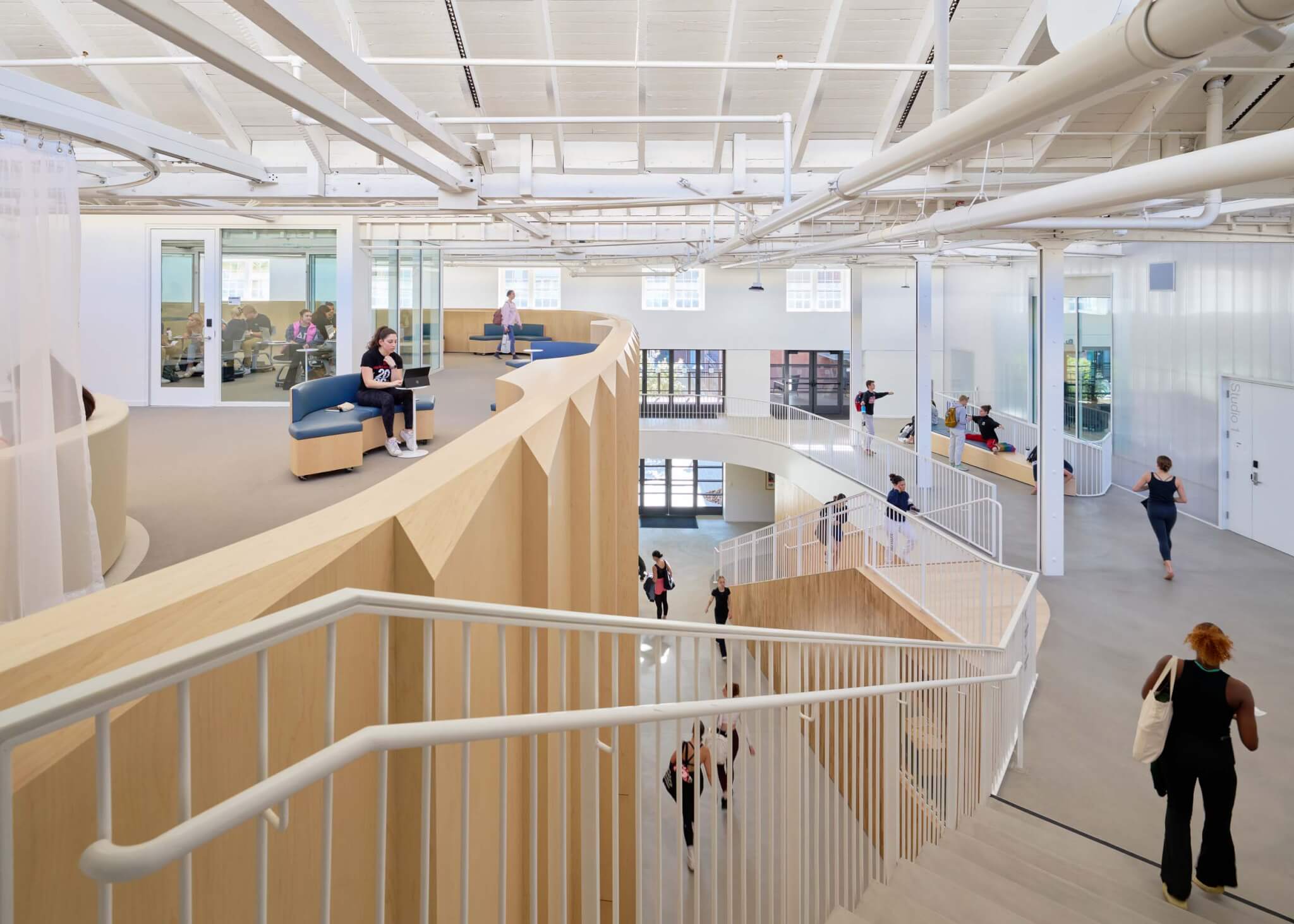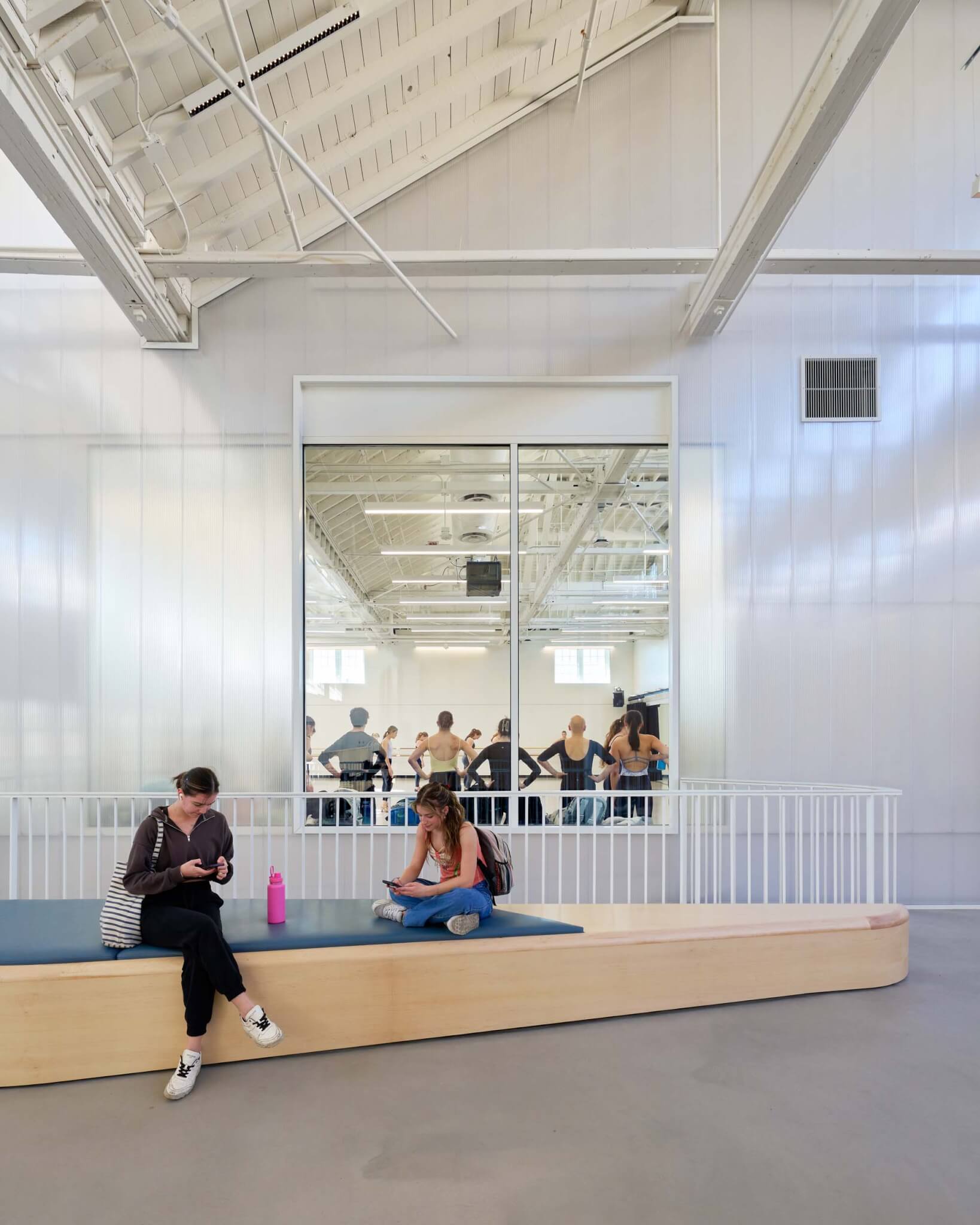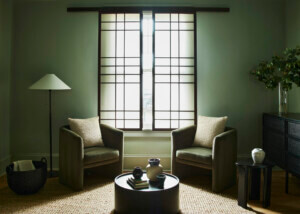“Dancers drive themselves constantly,” the American modern dancer and choreographer Murray Lewis once explained, “producing a glow that lights not only themselves but audience after audience.” As Murray and other figures in the dance world have testified, “lightness” is one of the essential ingredients of dance: Countless hours of heavy-footed missteps are smoothed out to become so light as to defy gravity.
It is this same sense of lightness—both as a physical and metaphorical quality—that guided Lorcan O’Herlihy when his firm, Lorcan O’Herlihy Architect (LOHA), was commissioned by Chapman University to transform a 100-year-old orange packing house in Orange, California, into the Sandi Simon Center for Dance. Part of a larger campus plan to be unveiled in the coming years, the dance center defines the university’s K/Dance Courtyard, tying together the newest student residence hall with the Department of Dance and encouraging social engagement to spill outside.


To achieve a lightness equal to that of its users, LOHA drew inspiration from the historic structure itself. “We were given a factory with an expansive sawtooth roof originally designed to shine light on oranges during all stages of the packing process,” said O’Herlihy. “We saw that we could provide a space for a new program that was all about fluidity, movement and energy if we brought light all the way down to the lowest spaces by cutting a large hole in the original floor.” Nearly all 72,000 square feet of the three-story building are naturally lit from above, thus allowing everything, from performance spaces and studios to classrooms, to maintain a constant brightness.
In an effort to repair the historic elements of the space without cluttering the interior with excess supports, a number of structural gymnastics were undertaken with the assistance of engineering firm Structural Focus: New steel-tube struts and tensile rods were added to the roof, and steel reinforcements were added to columns to compensate for openings cut into the floor.


The spaces in between the main rooms encourage students to relax and socialize—an opportunity notably missing from the department’s original facilities. “Professional-level dancing requires cooling off every now and then,” O’Herlihy explained, “so we found an opportunity for stress relief by exchanging hallways with open-air expanses large enough to accommodate open-ended furniture.”
Even the materials used throughout convey lightness in every way one might imagine the term. A polycarbonate wall dividing studios from the main atrium is punctuated by large panes of glass that frame performances taking place within. The nearly invisible barrier, almost screenlike, is obstructed only by crisp, white railings and narrow steel columns that gracefully add to the composition. Complementing this transparency, LOHA also selected maple wood to curve around the main performance studio at the center of the new space. A stepped pattern within the grain is a subtle nod to the sawtooth geometry overhead. Wood is also used in other places to warm the space, with sustainability always front of mind: For example, the original wood flooring was repurposed as cladding for the interior walls on the ground floor.


Running a firm best known for its residential design, O’Herlihy jumped at the opportunity to design a space that could uplift the next generation of dancers. “Cultural projects were my first calling when I first arrived in California from Ireland to pursue architecture,” he said. “This project was close to my heart, as it’s the type that allows me to find my true self as a creative practitioner.” As LOHA embarks next on several cultural projects from its recently opened second office, in Detroit—most notably including Sunflower, a 20,000-square-foot art center in the Old Redford neighborhood—the Sandi Simon Center for Dance serves as a precedent for matching form with function, a space for practicing the lightness of dance seemingly bereft of shadows.
Shane Reiner-Roth is a lecturer at the University of Southern California.










